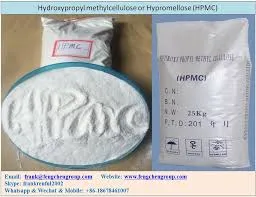
Okt . 30, 2024 15:37 Back to list
mortar bonding additive
Mortar Bonding Additive Enhancing Performance and Durability
In the realm of construction and masonry, the importance of strong, durable bonds cannot be overstated. Mortar serves as a crucial component in building structures, providing adhesion between bricks, stones, and other masonry units. To optimize this bonding process, the use of mortar bonding additives has gained traction among builders and contractors. These additives are designed to improve the performance, adhesion, and durability of mortar mixtures, leading to enhanced structural integrity.
Mortar bonding additives work by modifying the properties of the mortar. They improve the adhesion between the mortar and the substrate, ensuring a tighter bond that is resistant to environmental factors such as moisture, temperature fluctuations, and mechanical stress. Common additives include latex-based substances, which enhance the flexibility and elasticity of mortar, allowing it to absorb stress without cracking. This is particularly beneficial in areas subject to movement, such as seismic zones or regions with varying temperatures.
Another significant advantage of using bonding additives is their ability to reduce water permeability. Traditional mortar can be susceptible to water infiltration, which can lead to deterioration and damage over time. Additives create a more hydrophobic mixture, reducing the risk of water-related issues such as mold, efflorescence, and freeze-thaw damage. This property is vital for exterior applications, where exposure to the elements is constant.
mortar bonding additive

Furthermore, mortar bonding additives can enhance the workability of the mortar mix
. By improving its consistency and reducing the likelihood of segregation, these additives make it easier to apply the mortar uniformly, reducing waste and ensuring a cleaner job site. This is particularly advantageous for large-scale projects where efficient application can significantly affect timelines and labor costs.The environmental benefits of using mortar bonding additives should not be overlooked. Many modern additives are formulated to be environmentally friendly, helping to reduce the carbon footprint of construction activities. Some are derived from renewable resources, making them a sustainable choice for eco-conscious builders looking to minimize the impact of their projects.
In conclusion, mortar bonding additives are essential tools in contemporary masonry and construction. They enhance the performance and durability of mortar, providing stronger, more resilient bonds that withstand the test of time and environmental challenges. By using these additives, builders can ensure that their structures maintain their integrity and aesthetic appeal for years to come. As advancements in material science continue to evolve, the future of mortar bonding additives looks promising, with more innovative and effective solutions on the horizon to meet the demands of modern construction. Embracing these advancements is not just beneficial; it is necessary for achieving long-lasting and sustainable building practices.
-
The Widespread Application of Redispersible Powder in Construction and Building Materials
NewsMay.16,2025
-
The Widespread Application of Hpmc in the Detergent Industry
NewsMay.16,2025
-
The Main Applications of Hydroxyethyl Cellulose in Paints and Coatings
NewsMay.16,2025
-
Mortar Bonding Agent: the Key to Enhancing the Adhesion Between New and Old Mortar Layers and Between Mortar and Different Substrates
NewsMay.16,2025
-
HPMC: Application as a thickener and excipient
NewsMay.16,2025
-
Hec Cellulose Cellulose: Multi functional dispersants and high-efficiency thickeners
NewsMay.16,2025







